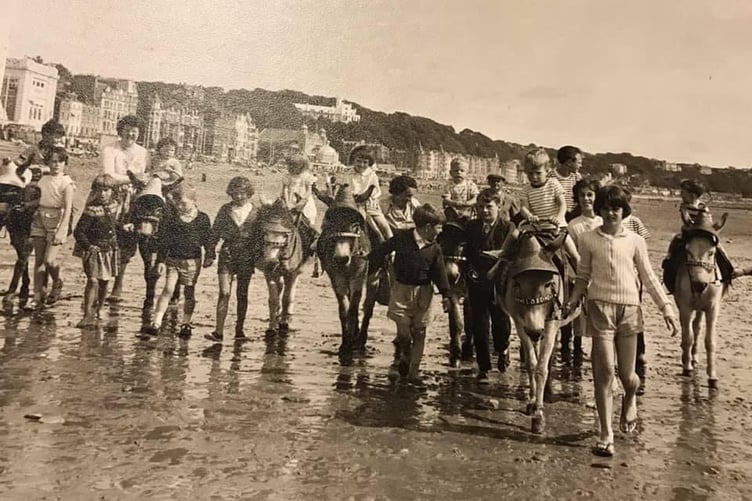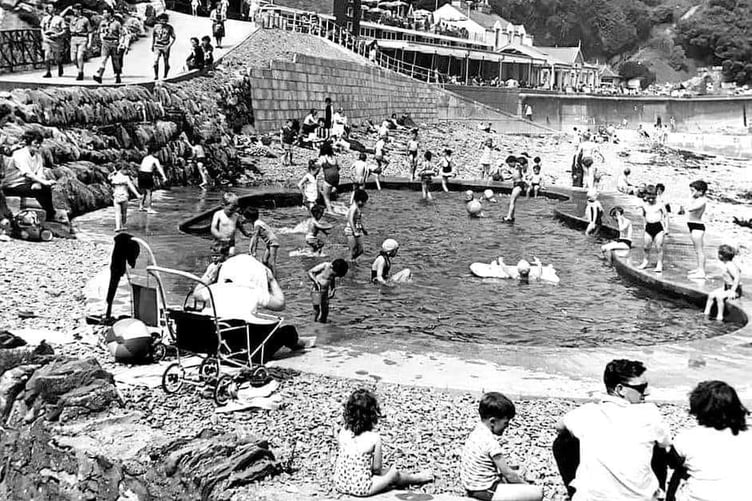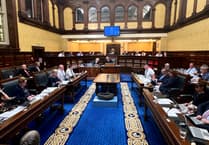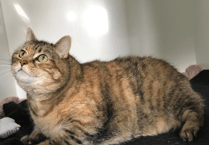In this week’s column, David Cretney speaks to takes a trip down memory lane and delves into the island’s past as a seaside destination...
I was sat at Port Erin railway station the other day with the dogs hoping to catch sight of one of our lovely steam locos.
Two people came up to me and introduced themselves as being over for a weekend break staying at the Sefton.
The girls said their grandparents used to visit the Isle of Man and they had come to see what it was like and would be coming again.
I don’t know how many times I have heard that over the years.
For the greater part of the last century we were the destination of choice for so many families with the added luxury of “going abroad to the Isle of Man!”.
Whenever I speak to visitors I always try to guess their accent in this case I guessed Norfolk but was well out as they were from Bristol and happy about the convenience of travel to our island.
I remain a keen supporter in relation to tourism, leisure, cultural, heritage and sporting breaks and need to ensure the ‘getting here and back’ is a good part of the experience from a value for money and reliability perspective.
Adrian Mcdowell who recently contacted me in relation to happy memories of Isle of Man holidays enjoyed the Steam Packet ships.
He told me about one glorious morning when the sea was like a millpond he managed to get his family on to the bridge of the Ben My Chree when Captain Jack Ronan was in command.
Adrian was very complimentary about ‘Captain Jack’ and many of us remember him fondly.
On this particular crossing from Belfast it was misty and as they passed by the Calf of Man he gave a blast on the horn which made Adrians kids jump out of their skins!
There was everything to do on the island he remembered about 10.30am the donkeys being brought to the beach and the cry would go up ‘Here come the donkeys’.
His daughter Christine’s favourite donkey was Alice who wore a straw hat with holes cut in it for her big ears to go through.
I remember the donkeys as well they used to come down from Nobles Park to the beach and their were always a number of young people volunteering to help the donkey man whose name I think was Sonny?
Adrians family stayed at a number of different hotels including the Savoy, Imperial and Hydro owned by Hilary Guard and family.
Again I have a family connection there in as much as my dad supplied provisions to the Hydro and he became good friends with the family to the extent that they invited him each year to share Christmas lunch with them in the hotel.
Shops which Adrian remembered included Jimmy’s on the prom, Webbs shop by the palace which was always good to find presents such as leather goods.
If you wanted to send kippers home Devereau’s in the arcade by the Villa Marina was the place to go.
Then a few steps away was Conibears fruit shop, lit up at night with a tempting variety of fruit on display such as beautiful peaches. His dad loved to have a coffee at Cannell’s cafe on Duke Street next to Strand Street which was a buzzing street to visit with the tempting smell of doughnuts and rock being made.
Who remembers the big window where you could watch the rock being made by the confectioners in Gores rock shop?
Then there was the dancing at the Villa Marina to Nat Temple and Kenny Ball.
On Sunday evenings there was no dancing in the villa but there were variety shows, Mike and Bernie Winters were old favourites.
Along the promenade you could listen to a group led by Ken Mcintosh who years before led one of Britain's best known orchestras.
Sometimes the villa hosted wrestling and Adrian remembers Klondyke Bill and Giant Haystacks, both long gone.
He first saw Ken Dodd at the start of his showbiz career at the Gaiety Theatre in 1954 (good year that!) I only saw him once at the same venue but was warned in advance and took along my sleeping bag!
He also recalled Stella Hartley performing each year at Frank Matcham’s masterpiece theatre.
Back in the 1960s Adrian and family took the coach to Kirk Braddan for morning service and the place was absolutely packed.
I have some old postcards of crowds walking to the service.
Coach tours were very popular including Corkill’s and Kneen’s which later became Manintourist.
Thanks for those special memories Adrian!

I was contacted by Ruth Cowin a resident at Marathon Court about her and other friends happy memories of Port Soderick.
After receiving her letter I went down for a walk to have a look.
The former arcade is now a charity supporting ex service personnel ‘Heroes on the Water’ and the site of the hotel and concert room has been cleared.
I spent lots of evenings in the concert rooms at the Douglas Head Hotel and Port Soderick.
They were great venues for live rock music and amongst those I remember best were Black Mass (of course!), Jo Public (with Frank Magee), Nasty Piece of Work and a number of others.
Prior to that I remember talent shows at the Port Soderick and various stalls adjacent to the hotel.
But much longer ago than that in fact in 1853 Joseph Ion advertised the opening of Port Soderick House as an inn called the St Helena Hotel’ where picnic parties could be accommodated with tiffins of curries and so on.
However, the exotic fare must have been a little too adventurous for local tastes as by 1856 an advert was placed offering for sale the household furniture and stock in trade which included a small fishing boat with lines, hooks and buoys.
Thomas and Morris Forester who came to the island from Edinburgh at different times operated the Glen Helen, Fort Anne and Queens hotels.
They were also associated with Laxey Glen Gardens and the Victoria Cafe on Victoria Pier.
In 1889 they purchased the Port Soderick Hotel and set about adding a restaurant and concert hall and a plaque nearby is a permanent reminder of the construction dated 1897.
I didn’t know but there was also a camera obscura in situ.
In the heyday of tourism there were three principal means of access to Port Soderick by railway, tramway and by sea.
The brothers installed a funicular lift linking the resort with the tramway terminus.
This twin car funicular had previously linked the Falcon Cliff Hotel with the promenade.
At the Douglas Head end of the tramway passengers could travel by steam ferry across the harbour then take the Douglas Head incline railway to the start of the tramway.
Integrated transport at its best!
The tramway carried over 200,000 passengers each year at its peak.
After the second world war the buildings became dilapidated and were purchased prior to a redevelopment scheme by Douglas Corporation in 1956.
Up to the mid 1970s Douglas Corporation ran a bus service along the Marine Drive until a serious landslip in 1976.
In 1985 Douglas Corporation sold the complex with only Stephen Pitts and myself voting against.
The Anchor Public House operated between 1993 and 2003.
A number of schemes have been proposed but sadly none have been brought to fruition so far.




.jpeg?width=209&height=140&crop=209:145,smart&quality=75)
Comments
This article has no comments yet. Be the first to leave a comment.